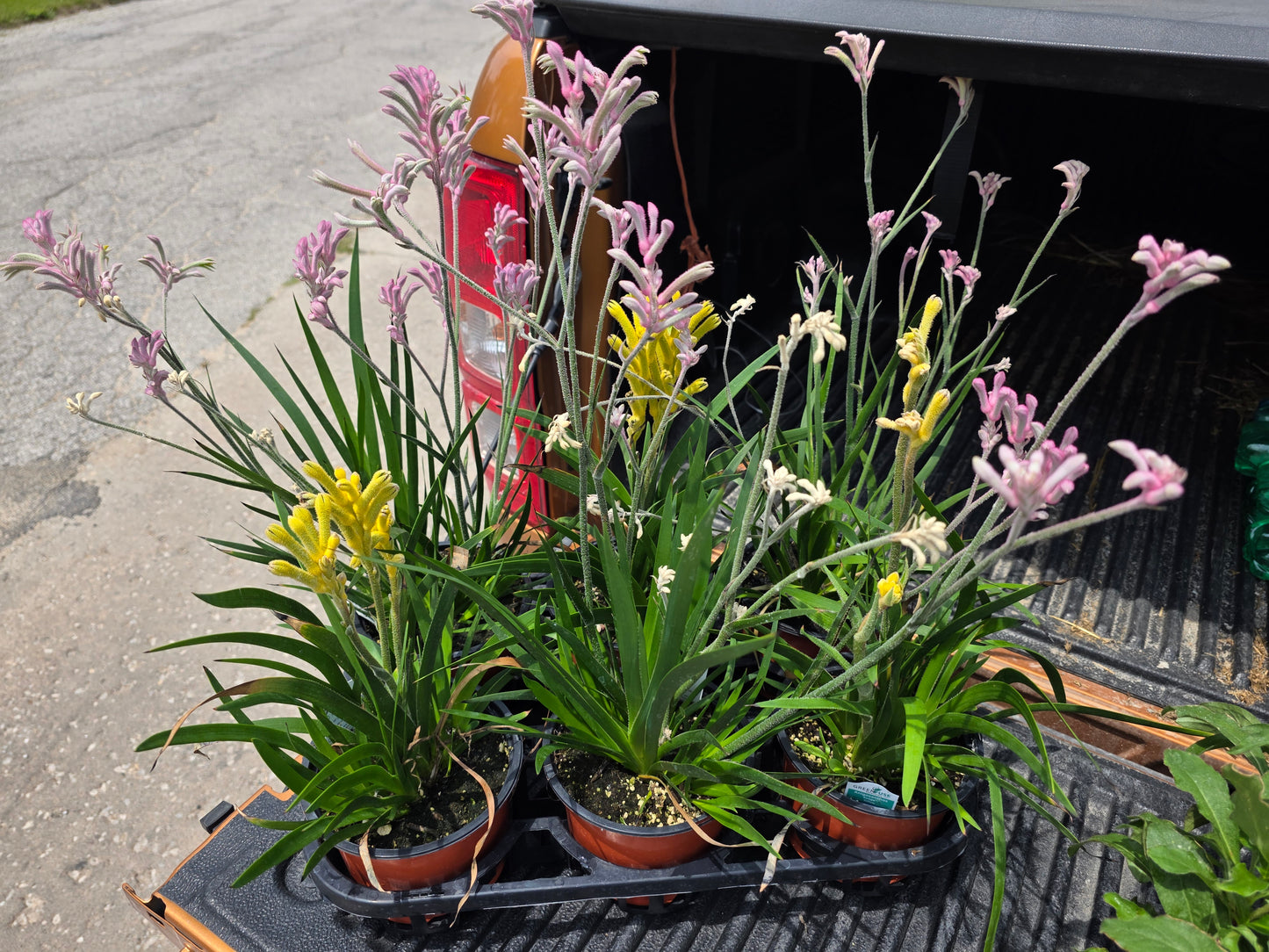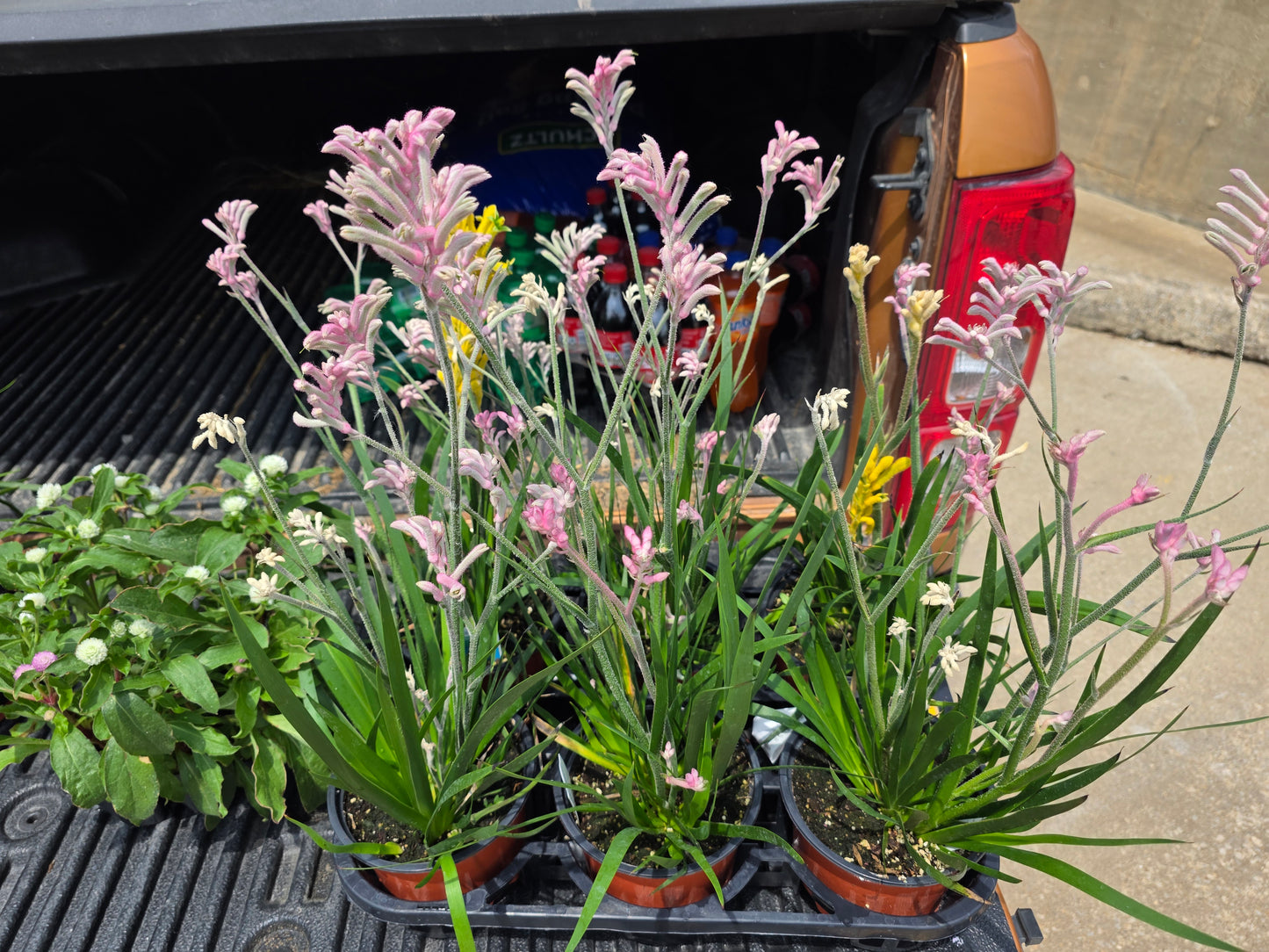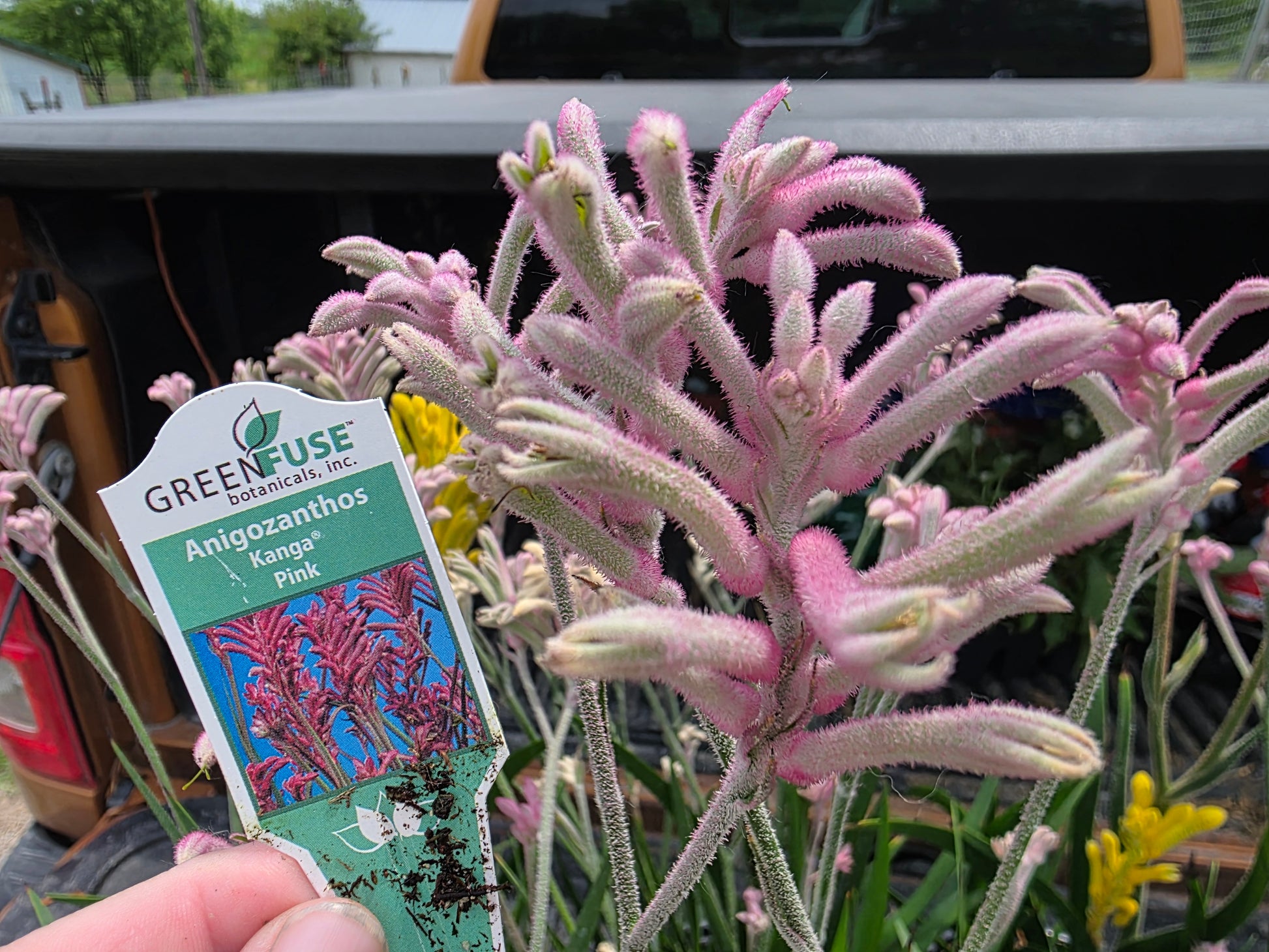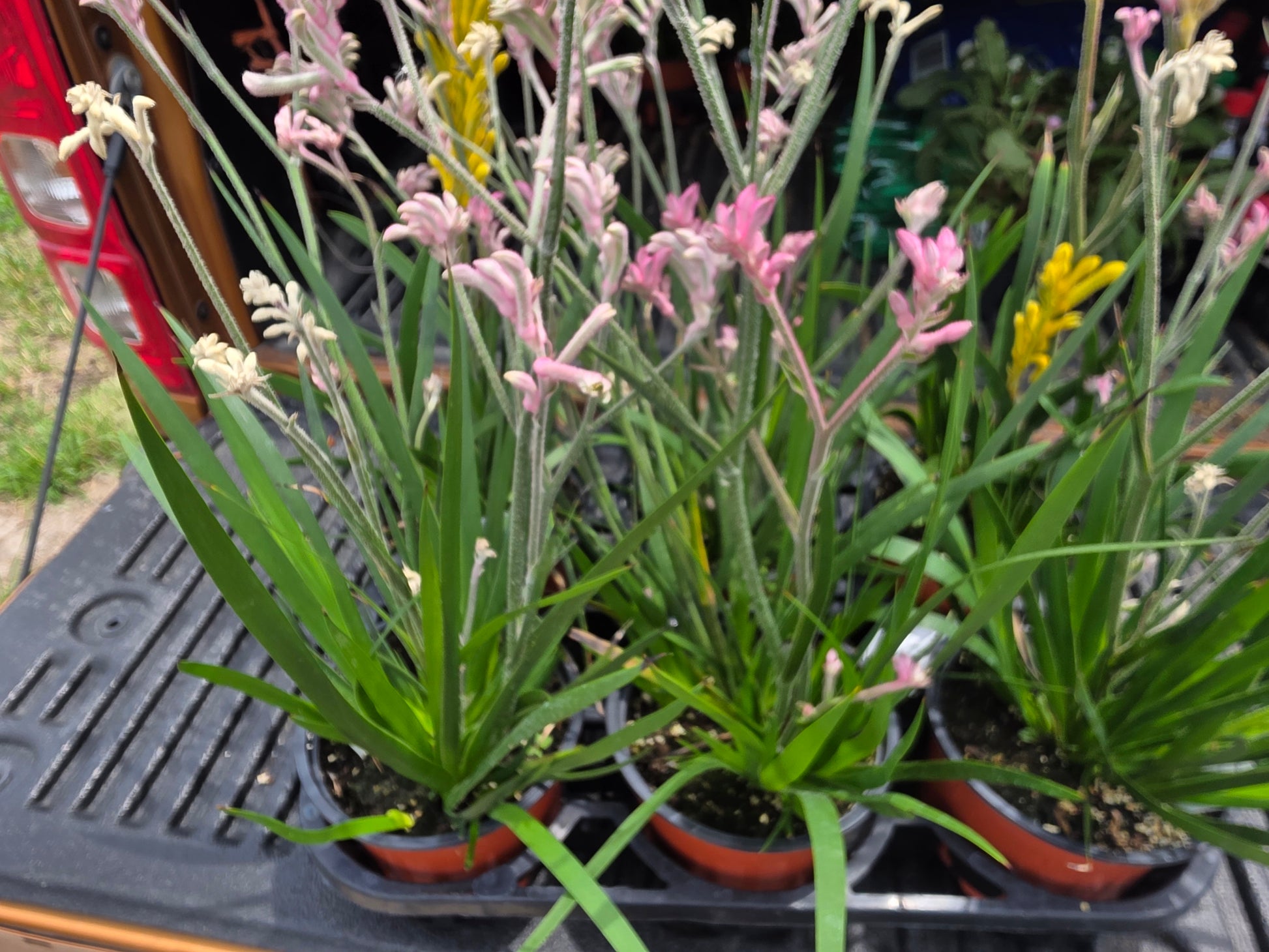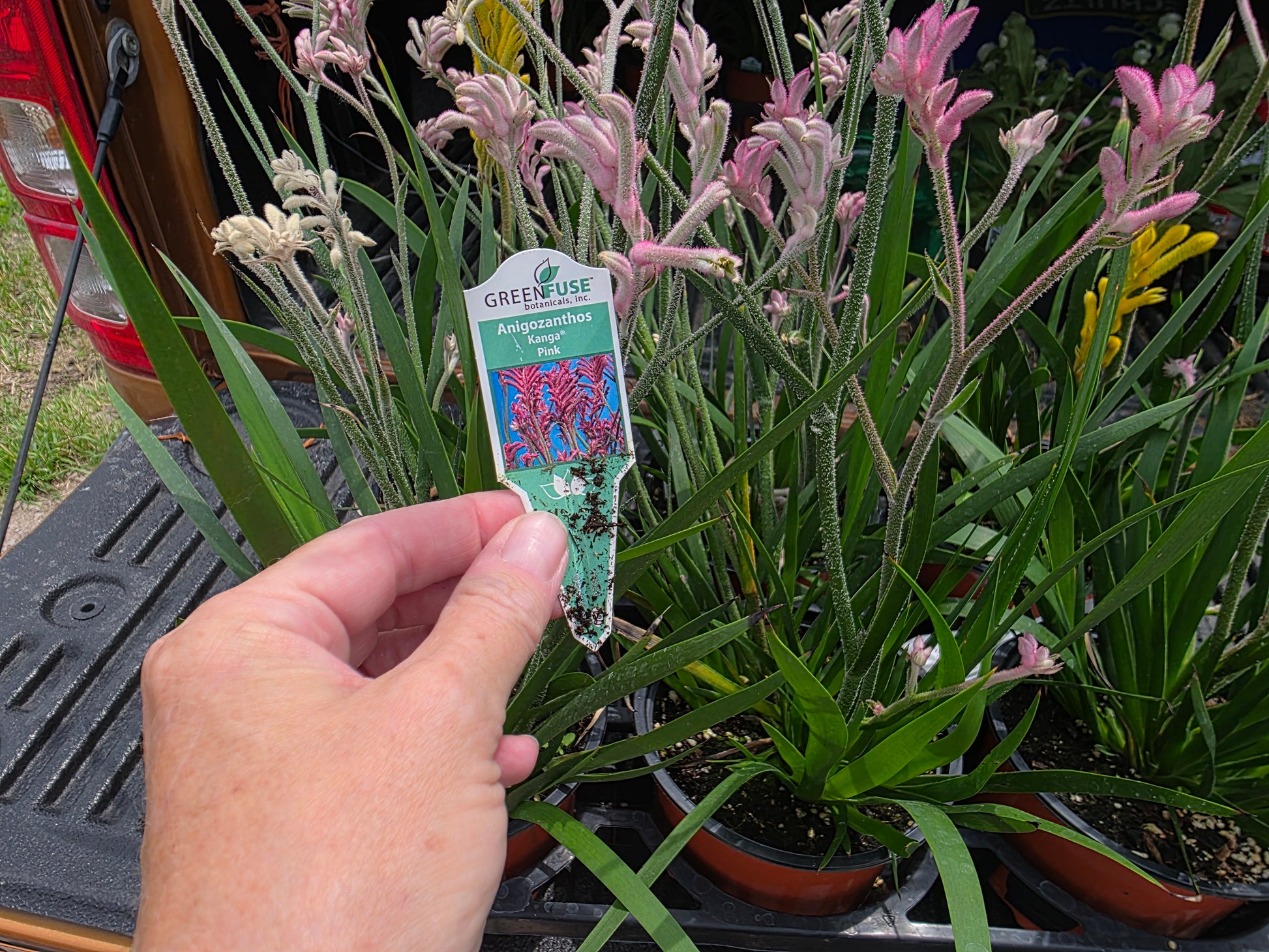Diane Van Dyk Co
KANGAROO PAW LIVE plant Pink full clump
KANGAROO PAW LIVE plant Pink full clump
Couldn't load pickup availability
Kangaroo Paw Plant
This isn't just seeds or rhizome it's a clump of growing plants 4+ inches tall
Ships as a clump currently housed in a 6in pot. Ships well rooted but no pot
The kangaroo paw plant, known botanically as Anigozanthos spp. or sometimes referred to as sword lily, is a vibrant perennial native to Australia. Its distinctive tubular, fuzzy flowers, which come in a range of colors like red, yellow, pink, and orange, resemble a kangaroo's paw, hence its name. The flowers are borne on long, leafless stalks that arise from a clump of strap-like leaves. Some species, like the Black Kangaroo Paw (Macropidia fuliginosa), feature black and lime green flowers.
The Kangaroo Paw: Too Easy! - Laidback Gardener
How to Grow and Care for Kangaroo Paw
The Basics of Kangaroo Paw Plant Care - Dengarden
Anigozanthos (Kangaroo Paw)
Anigozanthos 'Bush Ranger' - Boething Treeland Farms
Growing Conditions:
Light: Kangaroo paws thrive in full sun, ideally receiving at least six hours of direct sunlight daily for optimal growth and abundant blooms.
Soil: They prefer moist but well-drained, slightly acidic soil, such as sandy loam. Good drainage is crucial as soggy soil can cause root rot, which can be fatal.
Watering: While drought-tolerant once established, kangaroo paws appreciate moderate soil moisture, especially during spring and summer when they bloom. Water when the top couple of inches of soil feel dry to the touch.
Temperature and Humidity: These plants prefer warm temperatures (70°F to 80°F) and are not frost-hardy. They can tolerate some humidity, but dry conditions are preferred. If growing in a cooler climate, you'll need to bring them indoors for the winter.
Care and Maintenance:
Pruning: Pruning helps promote dense, healthy growth and can encourage further blooming.
After flowering: Cut back faded flower stalks to the base of the plant.
End of summer/early autumn: You can prune back the entire plant, including leaves and flower stems, to about six inches above the soil line. This helps prevent disease and encourages fresh growth in the spring.
Fertilizing: Generally not heavy feeders, but a light application of a slow-release, low-phosphorus fertilizer in spring before the flower stalks appear can encourage healthy growth and more blooms. Avoid over-fertilizing, especially with high phosphorus levels, as it can be detrimental.
Overwintering (in cooler climates): Bring potted kangaroo paws indoors when temperatures drop below 50°F. Place them in a bright location and water occasionally, keeping the soil on the dry side.
Pests and Diseases: Kangaroo paws are relatively resistant to pests and diseases. However, watch out for:
Ink spot disease: This fungus causes blackening of leaves and stems. Good air circulation and fungicide treatment can help.
Snails and slugs: These pests can damage the leaves. Snail bait can be effective.
Aphids and spider mites: These can be removed by hand or with a strong stream of water. Insecticidal soap or neem oil can also be used.
Propagation: Kangaroo paws can be propagated by division in the spring. This also helps promote healthy growth.
Interesting Facts:
Kangaroo paw plants are attractive to hummingbirds.
Anigozanthos manglesii, the red and green kangaroo paw, is the emblem of Western Australia.
Share



